RANDALL’S ADVENTURE & TRAINING PARENT-CHILD CLASS TEACHES SURVIVAL BASICS
Survival skills are for everyone and there are opportunities to get an early start in learning them from Randall’s adventure & training camp.
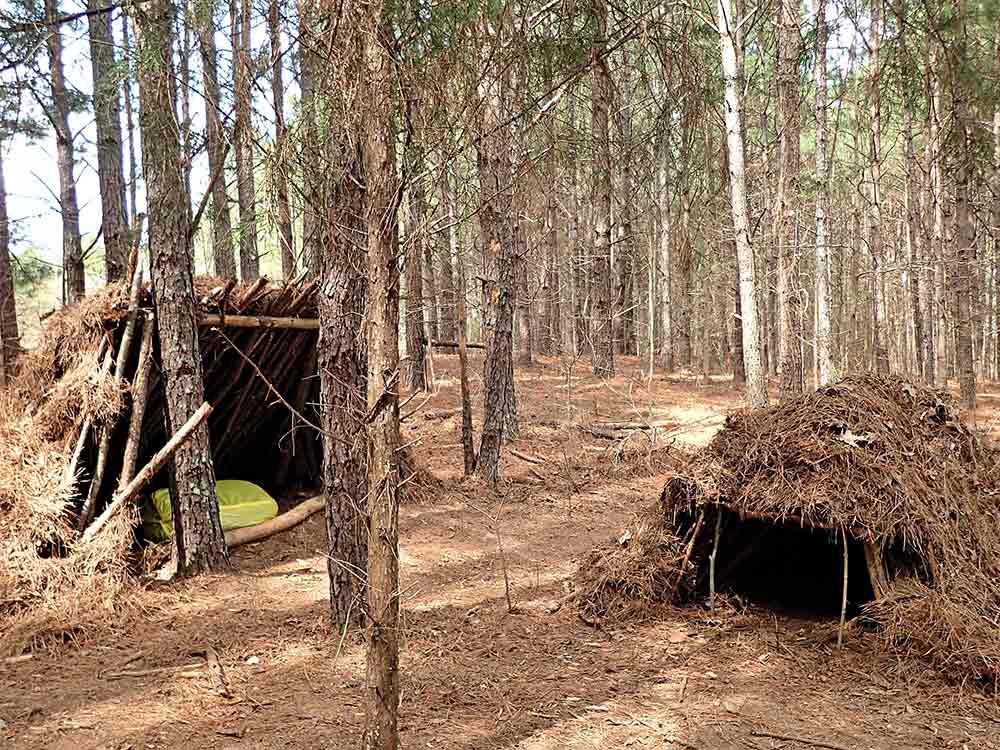
PARENT-CHILD CLASS
The minimum age requirement for a Randall’s Adventure & Training class is 18. However, the Parent-Child class allows participants from age eight and up. All must be accompanied by a parent, legal guardian, or family member.
Randall’s Adventure & Training has offered this class for several years. I have been fortunate enough to attend a few as an assistant. Lead instructor Patrick Rollins heads the outfit and covers the basics of survival in a class setting before taking the bunch into the woods for the hands-on portion.
The parents are also students and responsible for keeping their children on track, hydrated, and focused.
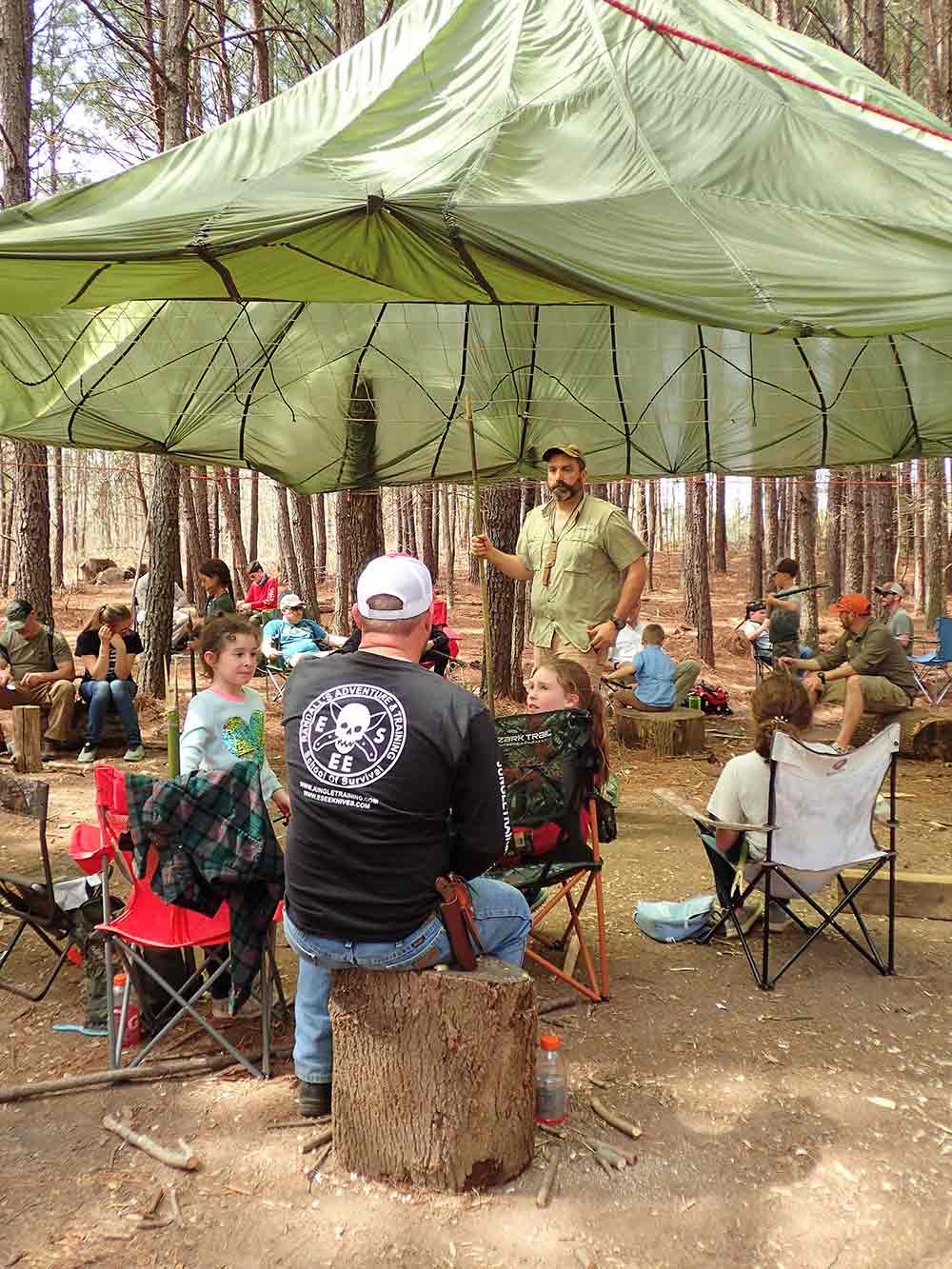
DAY 1
Class starts at 8 a.m. in a small classroom with PowerPoint instruction on survival priorities and basics. The classroom portion lasts about 45 minutes before everyone heads outside. The class really harps on one major point: the Hug-a-Tree and Survive program.
This program is inspired by a nine-year-old boy who was lost in 1981 in southern California. Jimmy Beveridge was his name, and his body was found approximately three miles from where he was last seen. Searchers claim they would have found him earlier in the search if he had stayed put and waited. Children are noticed as missing fairly quickly. Staying put should be their best skill. So, if the kids take home one major point made in the class about being lost, it isn’t the skills, it’s to Hug-a-Tree and Survive.
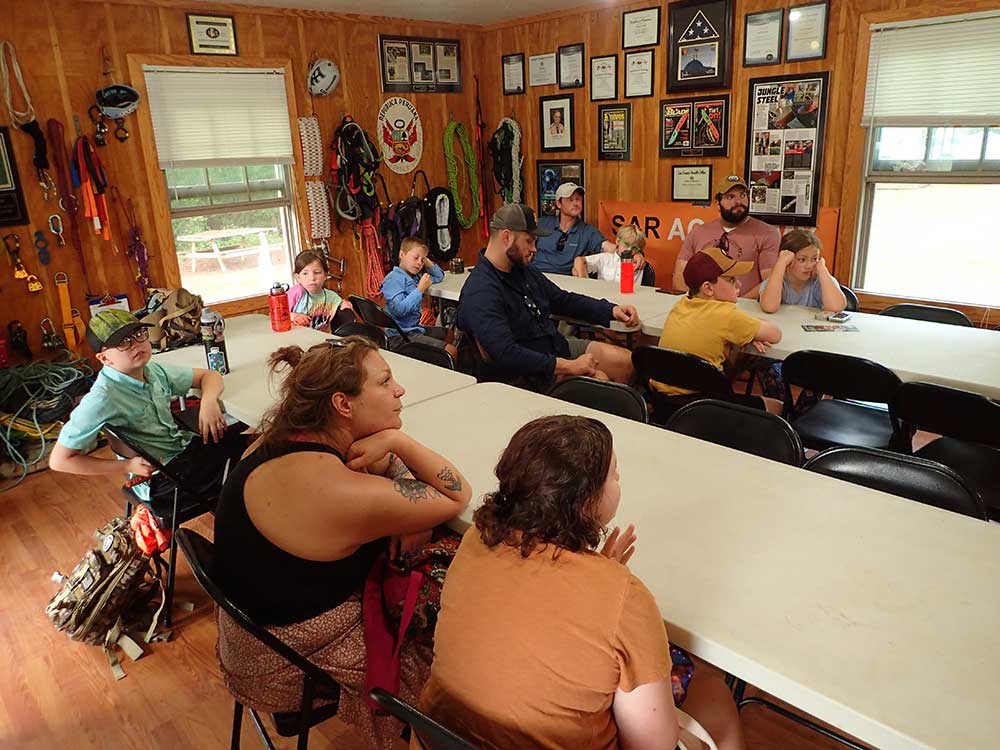
The group takes their backpacks, knives, and water out for some hands-on shelter building. First, the five W’s are explained for selecting a campsite for safety and comfort. Everyone participates in the step-by-step process of building a debris shelter. Very few cutting tools are needed, if any. However, this all depends upon the area in which you are making one.
Once the general framework is set up and explained, it’s debris time. Handfuls on top of handfuls of pine straw and debris are grabbed and put on the dinosaur-like wood ribbing structure. Before long, it resembles a hut-like mound of insulation. Insulation is kicked inside for a hefty loft of insulation.
“Children are noticed as missing fairly quickly. Staying put should be their best skill.”
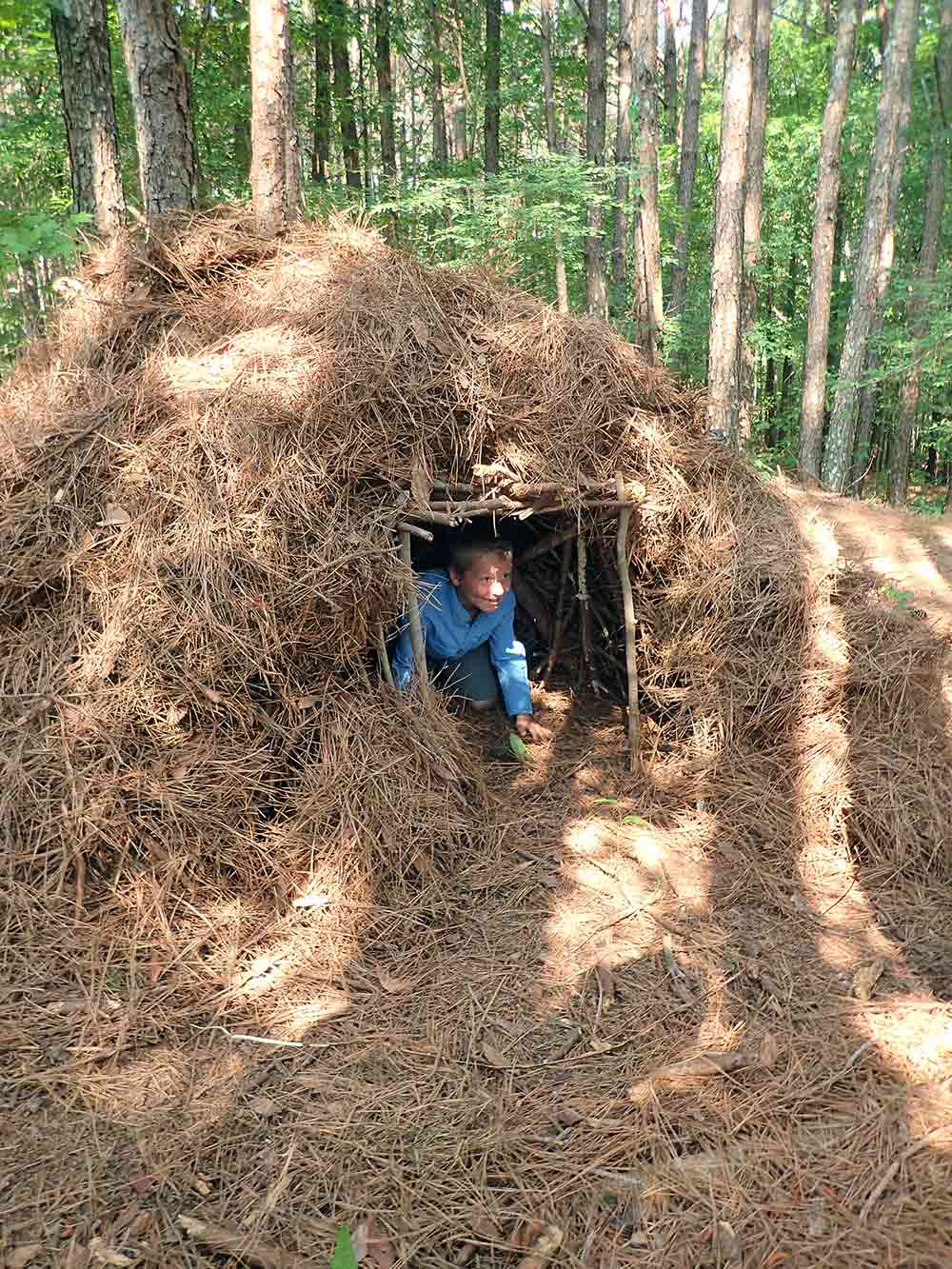
Naturally, kids want to squeeze inside and get their picture taken—parents, too. The next shelter is a classic lean-to made at shoulder height. A stout ridgepole is selected, lashed, and layered with wrist-thick poles found on the forest floor. Making a lean-to can be easier with a small folding saw, but improvising is admirable.
After a single course of thick poles, smaller sticks are laid at different angles to catch the thatching, utilizing more pine straw. The group used a garbage bag to fill up and dump the few last loads of debris over the top for insulation. The last time the bag is filled, it’s tied off to become the mattress. Since the lean-to shelter works with an open fire in front, the instructor explains about clearing all debris from the front of the shelter and taking one good step to mark where the fire will be.
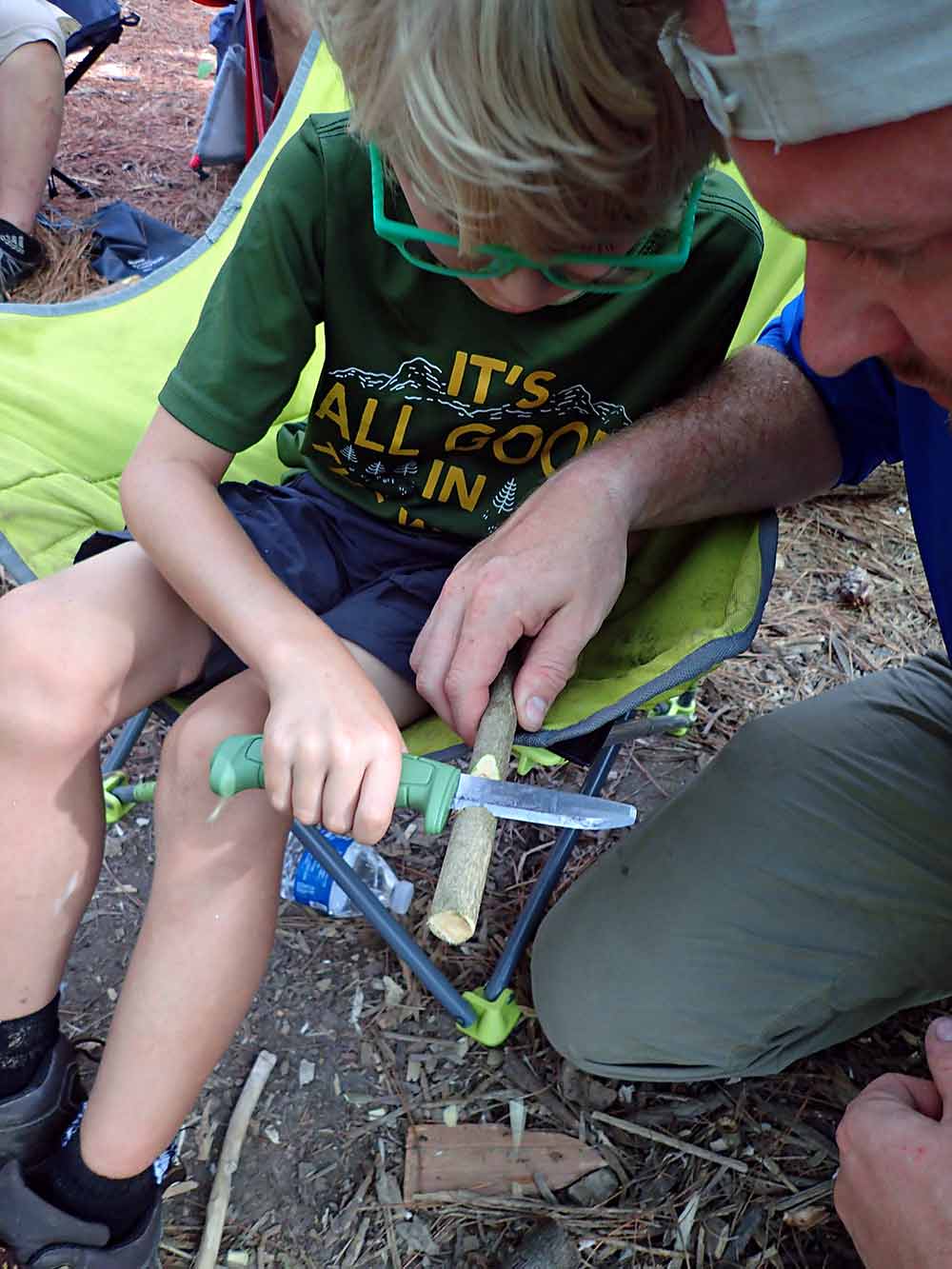
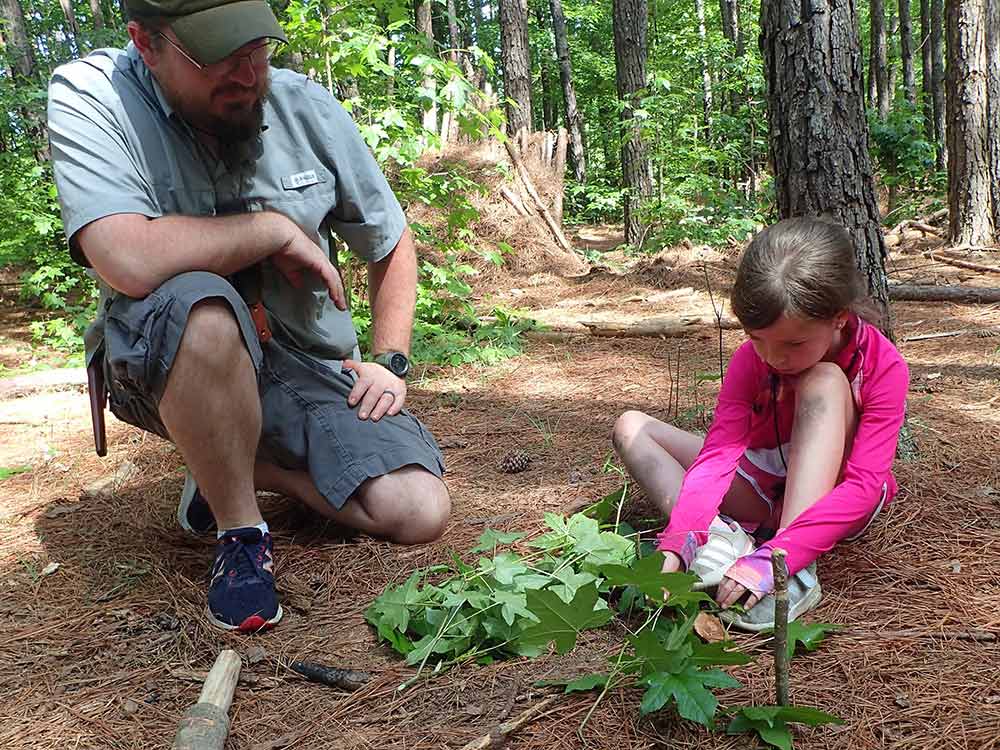
Knife safety and use are the next skills taught in another part of the training grounds. Safely deploying a knife, passing a knife to someone, cutting techniques, and people awareness is then taught. Knife skills go hand-in-hand with fire preparation. Making and using a baton/maul is taught while reviewing knife safety periodically. Knife skills would take an entire article to delve into.
Firemaking is discussed, explained, demonstrated, and then executed by all the students. This task is heavy on knife skills and takes up the remainder of the day. The one-stick fire method is taught using dead poplar wood with the bark still attached. The students are required to strip and shred the bark for natural tinder.
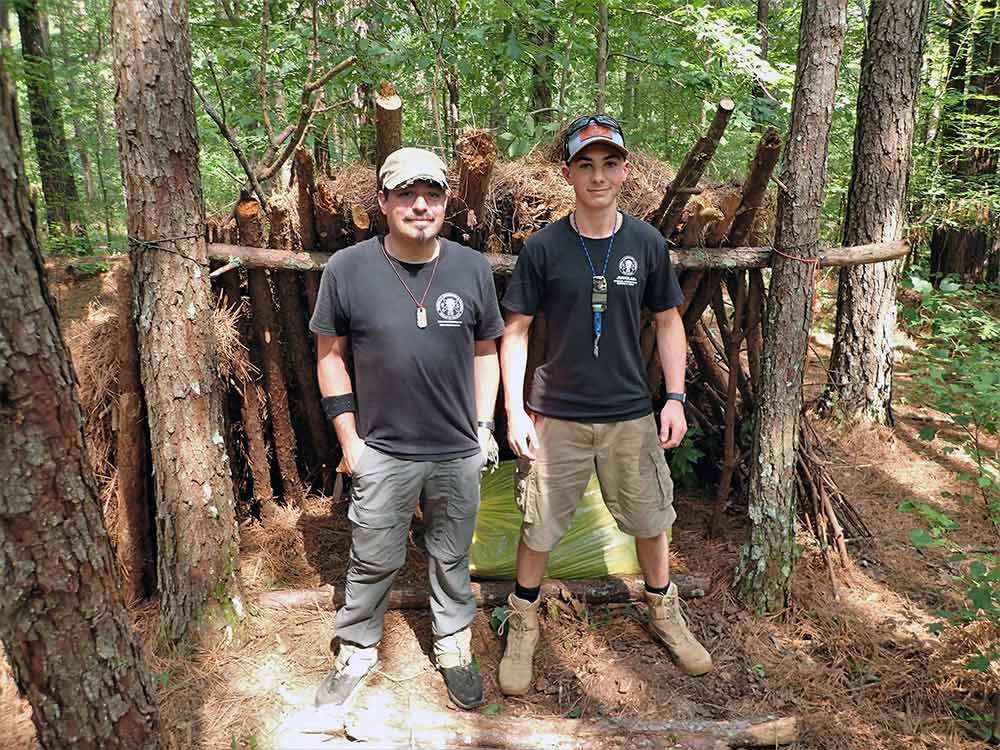
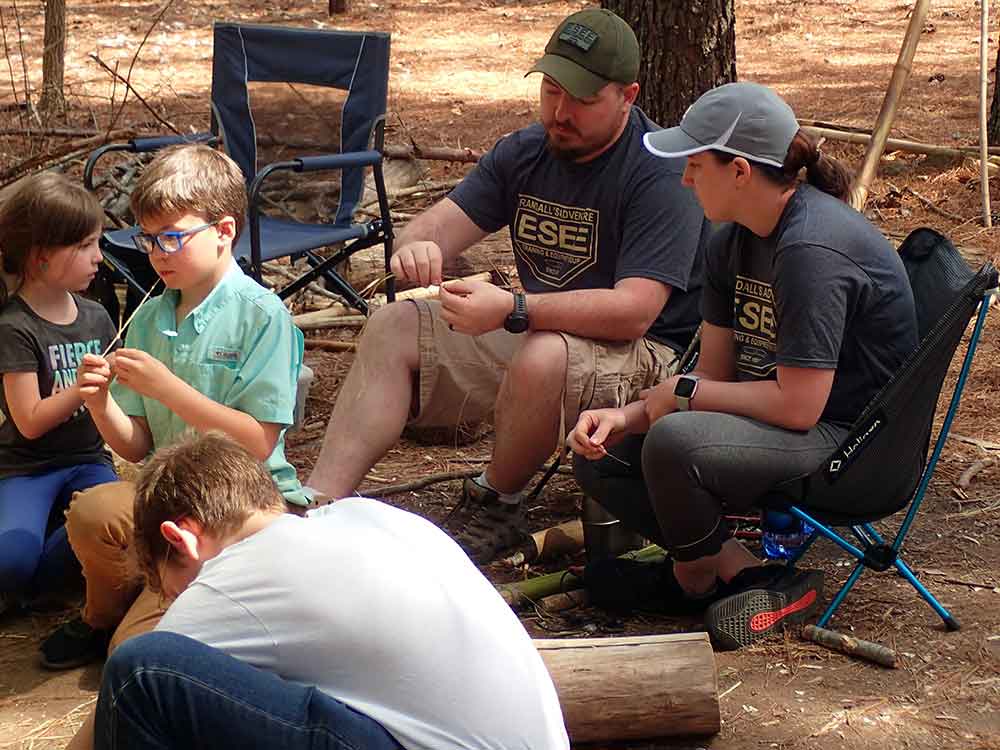
Once the students have their wood prepped, they have several different types of tinder they can try igniting. It starts with a cotton ball with Vaseline and jute twine and then moves to fatwood shavings and feather sticks, going from easiest to more difficult. It is always stressed that if you can light it with a ferro rod, you can easily light it with a lighter. Practice ensues until everyone feels they have a strong grasp on it.
Knots are the last order of the day. Typically, four to five knots are sufficient. Clove hitch, bowline, square knot, and constrictor knots are only some of them, as they can change. Any more knots and it becomes overload; too much information can equal zero information.
Everyone tries and practices, while some ask to shoot a video of the knots for later reference. Some families retreat into town for dinner and the hotel, while the more adventurous ones camp on the property and cook over the fire.
DAY 2
Day two begins with the same 8 a.m. start, with the first order of business being a figure-four trap. This is a simple trap; despite the ages and prior skill levels, there is a 100% success rate.
Stakes and wire snares are shown using thin wire and the notches taught during the figure-four trap. It must be noted that this sort of trapping is illegal in almost every state in the USA. This is taught for practice and should be used only in survival situations. The L7 Twitch-up trap is demoed, and students are required to make their own parts with attached cordage.
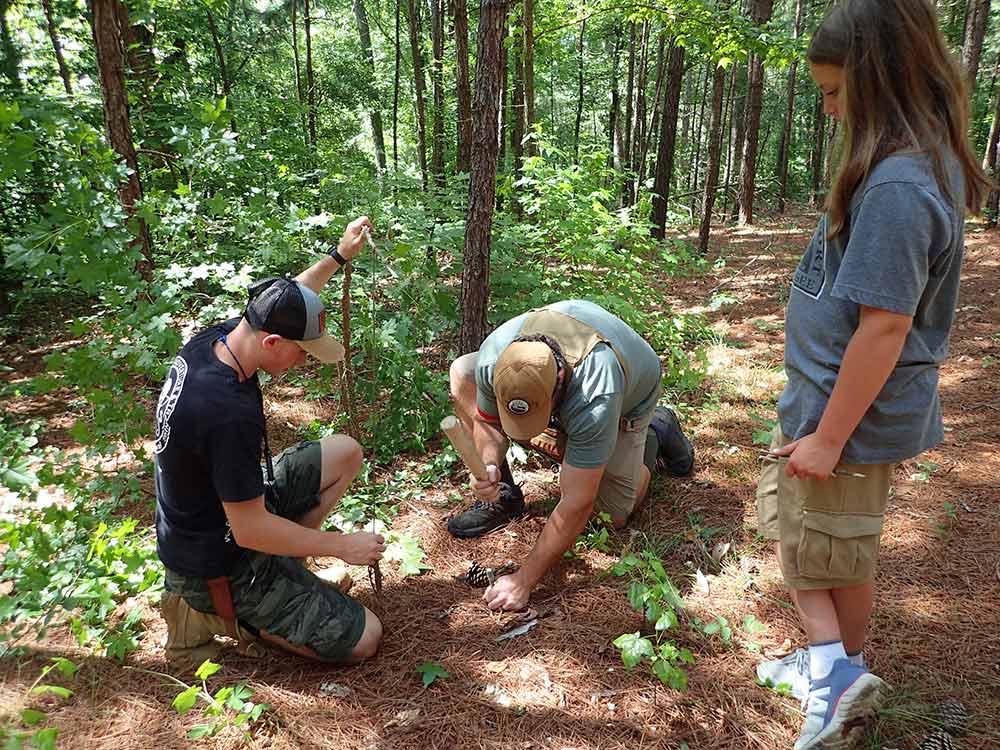
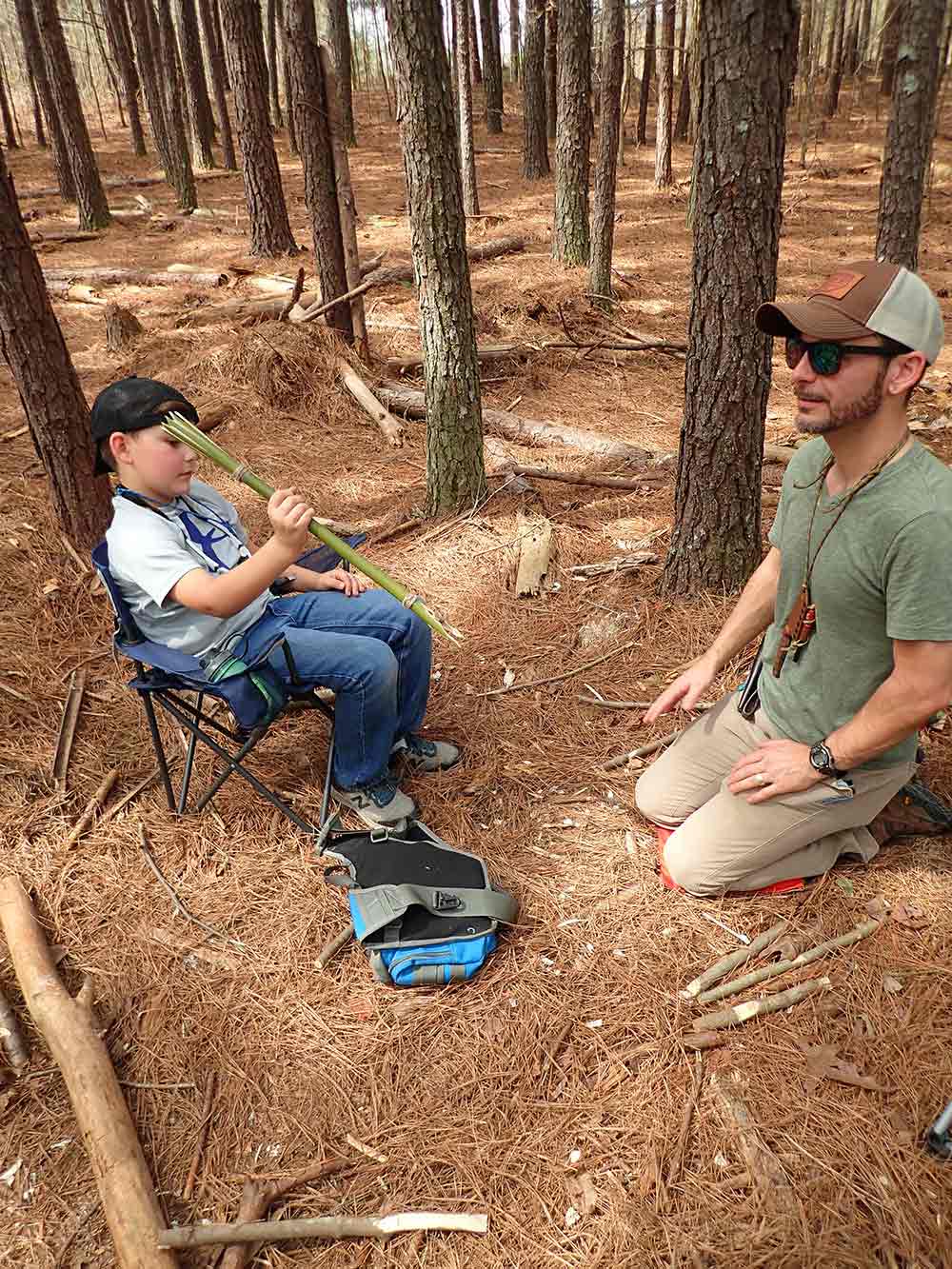
Fish spears are made from rivercane or green saplings, depending on what’s available. Two splits with a knife make four prongs splayed out and sharpened individually. Small sticks hold them open, and cordage is attached to prevent further splitting. For safety reasons, it’s better to make the length taller than eye level.
Competitions and prizes come on Sunday with a fire completion and an atlatl throwing spear competition. Families must make a sustainable fire that can reach up to a fixed piece of string. The first group to burn through the string wins. During this portion of the class, the instructors offer no advice—the students are on their own. Afterward, instructors offer critiques and advice and award prizes.
“The parents are also students and responsible for keeping their children on track, hydrated, and focused.”
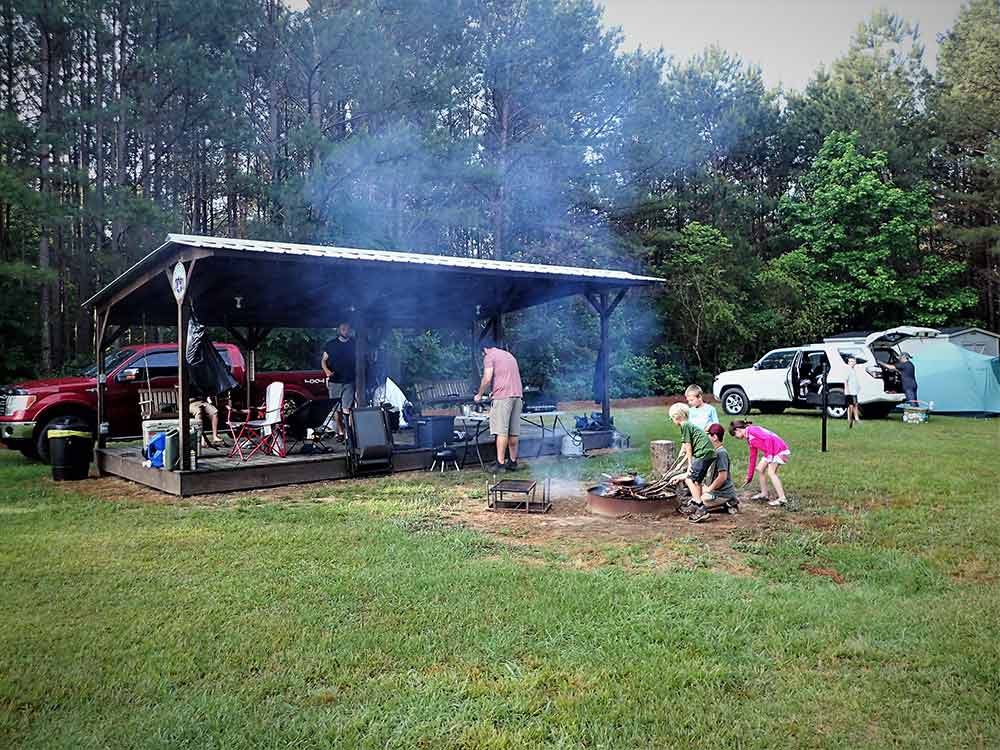
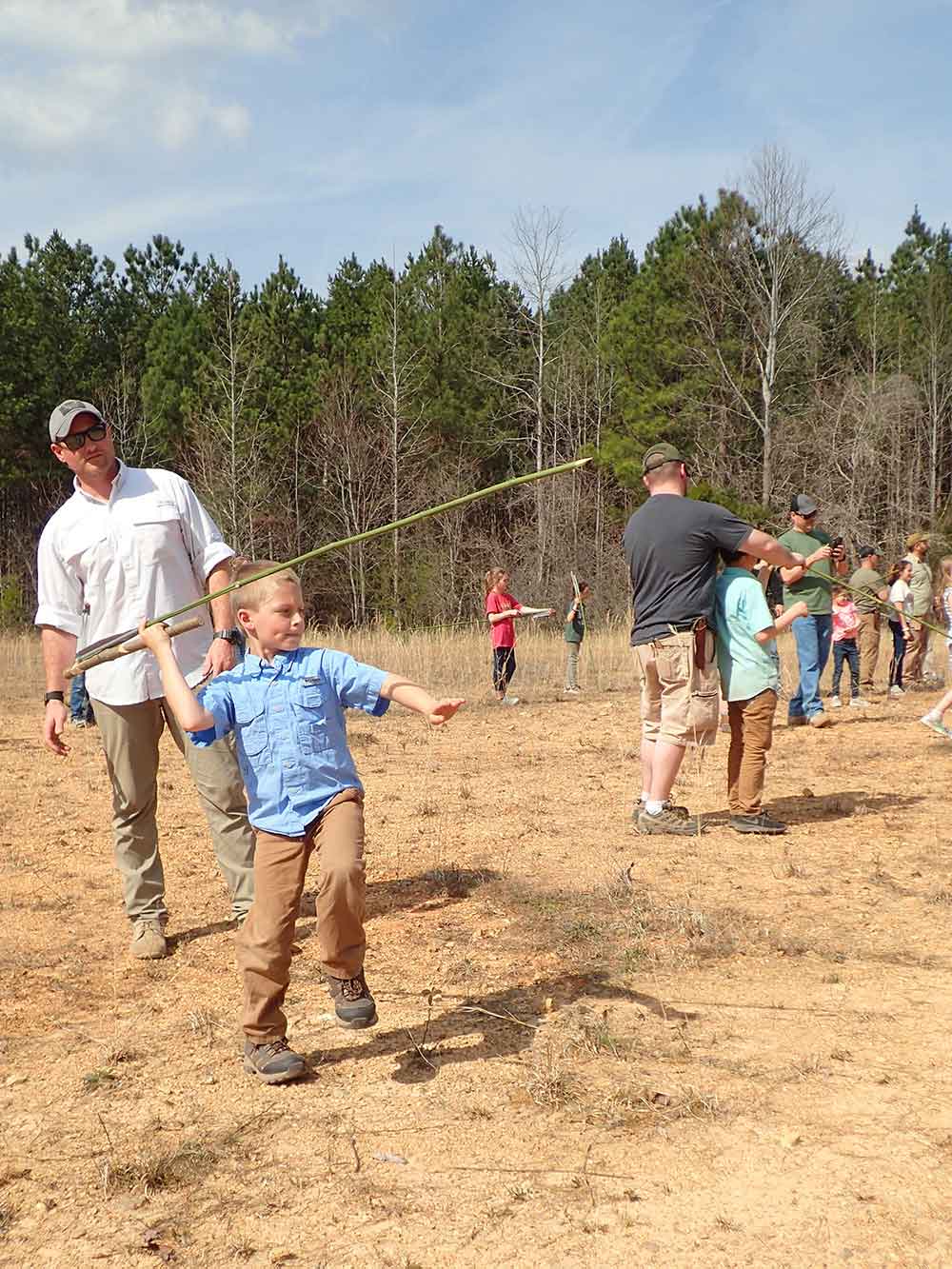
Simplified atlatls are made for this class. Rivercane, greenwood, and duct tape are needed, along with a knife. A pot-hook style notch on greenwood acts as the handle/thrower, and the rivercane is fletched with duct tape. The group moves to a large open field used for firearms training and takes a few practice throws before the big competition. After numerous throws, it comes down to the furthest spear marking, which merits a prize. Class dismissed.
LESSONS LEARNED
The Parent-Child class offered by Randall’s Adventure & Training doesn’t skimp on skills or attention to safety and detail. Some students have grown up doing these classes, particularly Gaston Dugger, who returned last class as an assistant. That’s a success story, in my book!
SPREADING SURVIVAL KNOWLEDGE
What started on the floor of the Amazon jungle has evolved into a plethora of training classes stateside for the Randall’s Adventure & Training School. The company training headquarters and ESEE Knives are based in Gallant, Alabama. However, classes are semi-mobile and reach out west to Arizona, Utah, and Idaho. It is also common for Randall’s Adventure & Training to venture into surrounding states such as Tennesse, North Carolina, and Georgia.
SOURCES
Randall’s Adventure & Training
www.randallsadventure.com
info@randallsadventure.com
Hug-a-Tree
NASAR.org/education/hug-a-tree/
A version of this article first appeared in the August 2022 issue of American Outdoor Guide Boundless.

